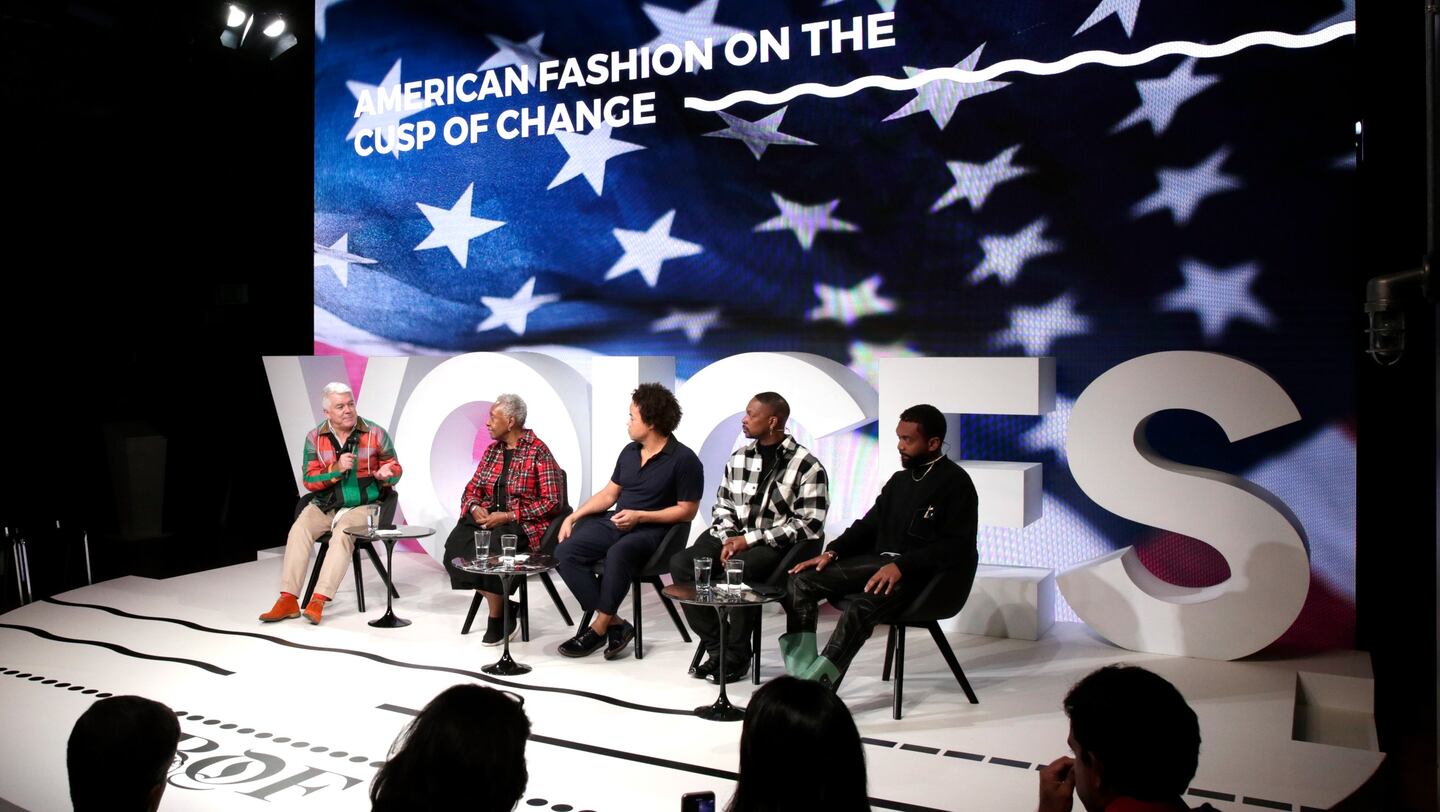
The Business of Fashion
Agenda-setting intelligence, analysis and advice for the global fashion community.

Agenda-setting intelligence, analysis and advice for the global fashion community.

OXFORDSHIRE, United Kingdom — Exactly 45 years ago, when five top American designers flew to Versailles to compete in a historic international fashion showcase that pitted US and French talent against each other on the runway, the American creatives garnered international respect and set a precedent for diversity. Ten of the models in the show were African American.
Bethann Hardison was one of those models. "We've had diversity, but then it disappeared," she said on stage at VOICES, BoF's annual gathering for big thinkers in partnership with QIC Global Real Estate. "Casting directors changed everything."
The model, advocate and agency founder joined designers Patrick Robinson, founder of eco-friendly line Paskho and former chief designer at Gap; LaQuan Smith, who designs for his namesake brand; and Kerby Jean-Raymond, the founder and creative director of Pyer Moss to discuss the barriers that black designers face and how they've found success outside the fashion system.
“Everything that I have done from the very beginning has been unconventional; it hasn’t been the proper formula for how to be successful in fashion,” said Smith.
“The white establishment is now starting to understand that there is this whole other thing that existed and thrived without them,” said Jean-Raymond, who recently won the 2018 CFDA/Vogue Fashion Fund, citing the success of Cross Colours, FUBU, Karl Kani and others. “We were the diffusion of the fashion industry for a long time, and now we are mainstream.”
Don't label me as a black designer, I'm black, but I'm also a designer.
Jean-Raymond said he recently walked out of a conference about diversity in fashion because the theme of the discussion primarily focused on how activism and inclusion are trends that are good for business.
“It’s not a trend,” he said. “I question everything, though. I’m cognisant of my place and … why I’m being asked to speak about my race versus my story.”
Robinson said he is aware of how he has been used by companies to demonstrate diversity when there were no people of colour in the executive suite. It’s reductive. “Don’t label me as a black designer,” he said. “I’m black, but I’m also a designer.”
The change Robinson is seeing in the industry now through Jean-Raymond and Smith, is that designers are in control of their own businesses and are catering to their own communities. “We are speaking directly to an audience that we understand and who we are,” he said.
Jean-Raymond added that while conversations about diversity and inclusion are often flawed, they aren’t happening outside of the American market. “There’s an active community of established people and unestablished people who are at least trying to speak to each other,” he said. “I love and hate my industry but I wouldn’t do it any other place than New York.”
To learn more about VOICES, BoF's annual gathering for big thinkers, visit our VOICES website, where you can find all the details on our invitation-only global gathering, in partnership with QIC Global Real Estate.
From analysis of the global fashion and beauty industries to career and personal advice, BoF’s founder and CEO, Imran Amed, will be answering your questions on Sunday, February 18, 2024 during London Fashion Week.
The State of Fashion 2024 breaks down the 10 themes that will define the industry in the year ahead.
Imran Amed reviews the most important fashion stories of the year and shares his predictions on what this means for the industry in 2024.
After three days of inspiring talks, guests closed out BoF’s gathering for big thinkers with a black tie gala followed by an intimate performance from Rita Ora — guest starring Billy Porter.